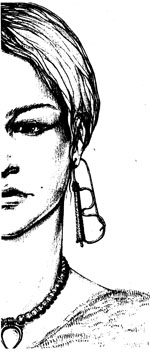Archaeological Museum and San Donato Necropolis

The Civic Archaeological Museum is situated in via Resenterra and it collects artefacts discovered in the archaeological excavations of the Roman necropolis of San Donato.
Archaeological studies on the area of San Donato boast an ancient tradition dating back to at least 1776 thanks to Don Francesco Pedri, the parish priest of Telve (TN). He highlighted a close and ancient bond between the Tesino and the territory of Lamon, linked to the early evangelization of the territory that exploited the existing communication routes (G. Guiotto" El Campanon "n.15 2005). In 1793, the hypothesis of a roman occupation and the existence of an important artery of communication between the two plateaus is supported by Giuseppe Andrea Montebello in his work "Historical, topographical and religious news of Valsugana and Primiero", where he reports all the information received from Bartolomeo Villabruna.
At the end of the nineteenth century Don Pietro Tiziani, the priest of San Donato, conducted a first series of excavations in its small family farm in the locality Piasentot, inspired by the stories of a paternal aunt who told him about the fortuitous discovery of a small urn "of about half a liter and almost full of ancient coins". Later, after several excavations, Don Tiziani found the first tombs and their grave goods characterised by an articulated composition.
However, it will be necessary to wait another 100 years for a systematic archaeological investigation, which started in 2000 and continued in 2001, 2003, 2005 and 2009, confirming the existence of an interesting Roman necropolis on this site.
In the Roman age the area of San Donato belonged to the municipium of Feltria, whose administrative jurisdiction included almost the whole Valsugana. A route- attested by the Itinerarium Antonini (III century AD) - connected the ancient Feltria with the upper Valsugana and then with Tridentum, therefore there are good reasons to believe that the path crossed the area of San Donato in order to reach Ausugum (Borgo Valsugana) and that the Roman settlement to which the necropolis in question belonged was a small town along this street.
The excavations conducted so far (the last one during the summer of 2009) and financed by the Cariverona Foundation, the Veneto Region and the Municipality of Lamon, have altogether brought to light over eighty tombs.
The necropolis has very unique characteristics if compared to the others of that age. The oval-shaped tombs found in the ground contained huddled bodies with more or less flexed limbs. Individuals were seated with their backs resting on the wall of the pit and with their heads facing east. This type of inhumation is typical of the Bronze Age and very different from the traditional one ( supine burial or cremation).
The grave goods, both male and female, are made up of everyday objects, clothing, ornaments and coins. Ceramic elements are almost absent with only one exception. In the female tombs many bronze, silver and glass ornaments have been found, indicating a certain status of the population. Note the presence of the so-called "B" silver earrings which, due to their very particular shape, have been chosen as the symbol of the exhibition.
More basic, but still very interesting, was the men's funeral kit which included the famous pocket knives used in the daily work. No weapons have been found so far.
Also quite unusual was the discovery in 2001 of a very particular burial alongside the human ones: an ox, aged two years, probably sacrificed for some propitiatory rite and subsequently buried with all the honours in the same period of the other humans. This discovery suggests an abundance of food since the ox was buried entire, as it can be seen from the analysis of the bones. The accurate deposition of this animal, with its head resting on a large stone which kept it slightly raised, leads us to believe that it was part of a sacrificial rite.
Finally, it is worth to mention the almost total absence of young people (only two out of the eighty graves so far discovered) and the particular physical characteristics of these ancients Romans, strong and robust. The grave goods brought to light during the excavations conducted in 2000, 2001 and 2003 have been completely restored in the Restoration Laboratory of the Soprintendenza per i Bene Archeologici. Furthermore, the scientific cataloguing of the objects was accomplished with the funding of the Ministry for Cultural Heritage and Activities. The Soprintendenza has also insert the analysis of the glass and gold parts of the necklaces, found in some female burials of the necropolis, as part of a Finalized Project for Cultural Heritage.
The Museum is open at fixed times during summer, by reservation the rest of the year.
For information and booking: Pro Loco Lamon 0439/96393

